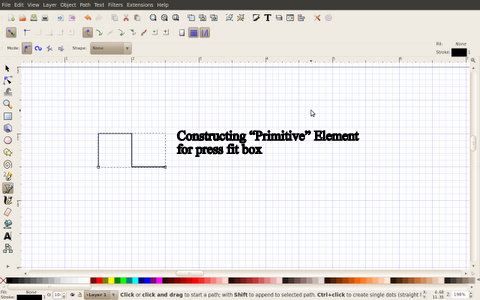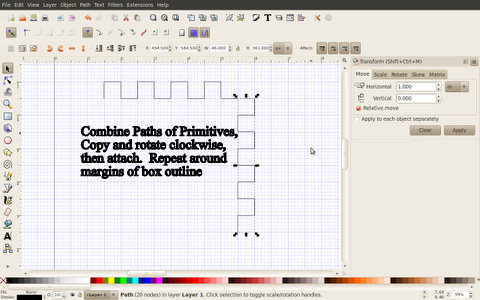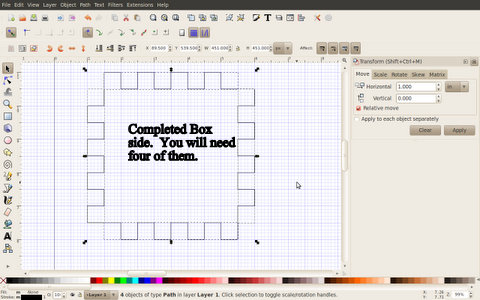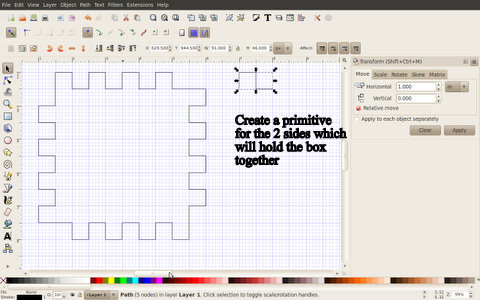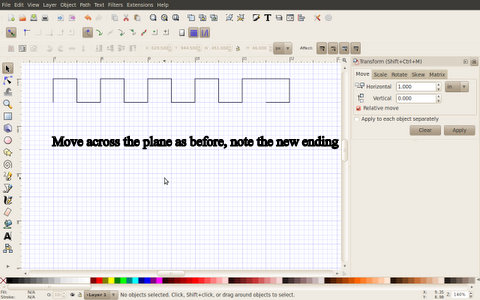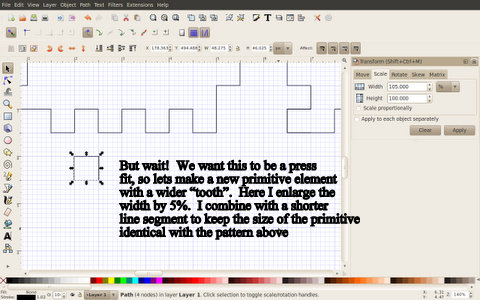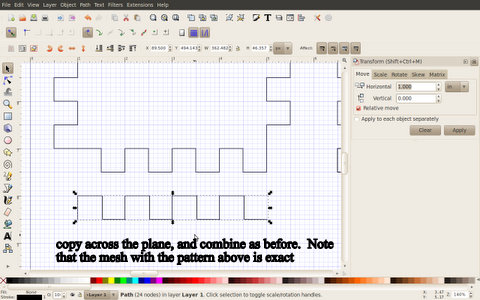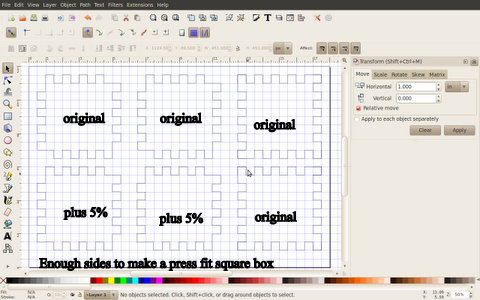Our project this week was to create press fit constructions using laser cut cardboard elements. In addition to the press fit join of individual elements with complimentary slots, I added a box and pin articulation to these elements such that pieces may also be held together in compression with 3, 4 and 6 fold symmetries. A trussed arch, a "woven" column, and tower structures are presented.
A set of pieces was designed in Inkscape, and cut out on the laser cutter.
Here you can see the box and pin elements press fit at right angles
Note on the back side, the protruding pins are laced through the box side of the hinged press fit. When linked together with adjoining elements, this has the effect of compressing 6 of these individual elements into a hexagonal column.
Here is what the primitive elements look like in Inkscape. They may be translated to created chains of any given length that may be produced by the laser cutter

The elements may also be staggered, such that a column may be "woven" to a given height
All 20 images of the photoset may be viewed through my Dokuwiki and Flickr page
The 6 sided square in this example has 4 sides of one geometry, and 2 sides of another. The 4 sides have 4 "teeth", and the 2 sides which hold the box together have 5 "teeth". To make this a true press fit, it is necessary to modify the primitive element so that a tooth is slightly larger, and the gap slightly narrower on adjoining sides to take advantage of a press fit compression with ECT-44 corrugated cardboard. In this case I enlarged the tooth by 5%, and narrowed the gap by a corresponding amount. The crucial move is that the primitive has the same overall length, and as it is tesselated across the plane maintains the same overall box dimensions. The photoset illustrates as follows:
